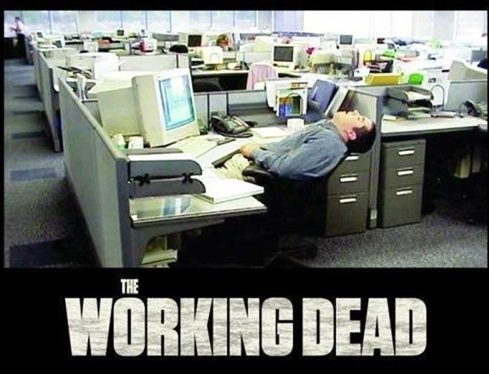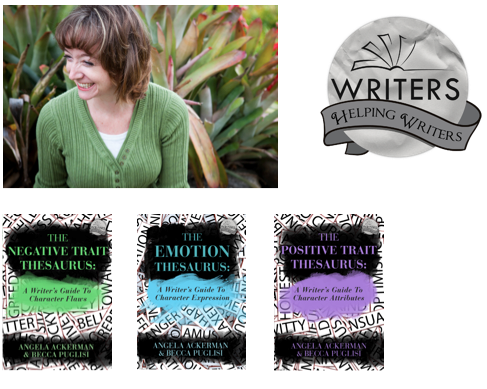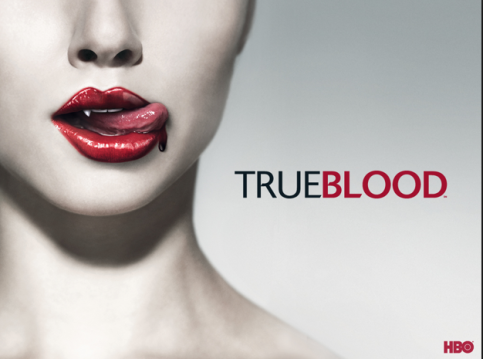The Art of Business & The Business of Art—Breaking Rules to Reveal Our Audience
There are a lot of fabulous blogs and books on business, especially for writers. How to promote, do a tour, switch an algorithm, etc. But, I tend to be a broad strokes kind of gal. I dig simple. Simple works. Simple doesn’t have an expiration date.
ART is a Business & Business is an ART

Image via Flickr Creative Commons, courtesy of Mark Roy.
When companies forget they are servants and act in a way that makes consumers serve them? That’s when they get into trouble. Businesses are in business to…make money. NO. Businesses should be in the business to serve people.
Artists are in the business of “making and selling art.” NO. They should be in the business of serving the audience. It is a TWO-WAY dialogue driven by core needs.
This is where many writers need to breathe into a paper bag because they break out in hives at the mention of “business.” But, if we want to create anything that people want to PAY MONEY for? We are a business.
Be the Consumer
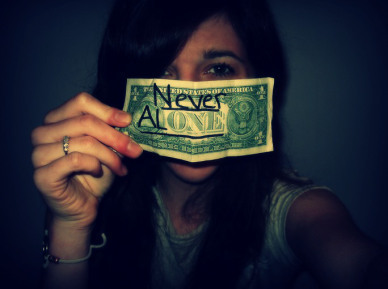
Image via Demi-Brooke Flickr Creative Commons
The power of empathy is particularly crucial. Humans are actually very simple. Most of our decisions are driven by the primal brain. We like to feel good about a purchase. We often can’t articulate WHY we made a decision because it is the non-verbal part of our brains at the steering wheel when we choose.
Also, the product is all about US.
Friday, when we talked about breaking rules in writing, there was a lot of mention about writers simply breaking rules to break them. Yet, I would challenge every artist (or business) to step back and feel. Think about the customer FIRST and ego second. Money LAST.
Case in Point
I never set out to be the social media expert for writers. Yet, as early as 2003, I knew social media would completely alter the publishing paradigm. Anyone who bought an MP3 and had an ounce of imagination could see the domino effect ahead.
Tower Records–>Kodak–> Big Six Publishing
I was very grateful for the computer and marketing people who attended conferences to teach social media, but I had a couple of problems.
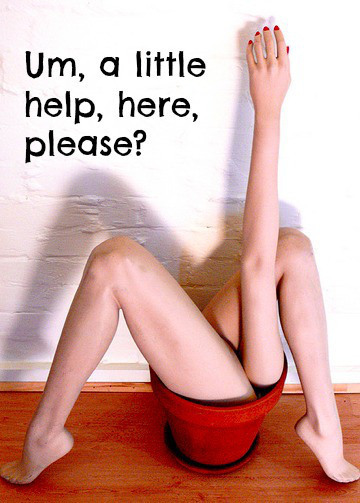
Image via Flickr Creative Commons, courtesy of Sally Jean
First of all, I knew writers would eventually HAVE to have a brand and social media platform or be dead in the water. The problem was that these computer people didn’t know how to talk to creative people who had trouble opening their e-mail. At the time, many writers (and editors and agents) refused to even USE e-mail.
Thus the presentations actually scared people because they didn’t empower them.
Writers mentally checked out because the computer people made “branding” and “platform-building” too time-consuming and complicated.
The marketing people did the same thing (and, in my mind, many of their tactics were from a 20th century playbook). Their approach didn’t fit into a world where everyone was instantly connected and the flow of information was dynamic and light-speed.
I.e. Having a Facebook Fan Page for EVERY BOOK. Really? O_o When the heck would we have time to WRITE?
Additionally, one thing I noticed (being a salesperson for many years) is these experts failed to consider their audience. They were talking code, algorithms, apps and technology to a group of people who averaged (at the time) over 50. Writing, when I started, was something people often did when they retired or the kids were out of the house.
Their CUSTOMER was my mother who was afraid she’d delete the Internet, yet they failed to connect with “her” in a meaningful way.
As far as the marketing and PR people? There was far too much high-pressure sales involved in their methods. Yet, NO WRITER in the room was thinking, “Hey, I am just going to write about dragons until my dream job in high-pressure SALES comes along.”
I don’t want to be presumptuous, but I noticed many of these early experts had “affordable packages” available. In my mind, they were scaring the audience into feeling powerless in order to sell them something.
That ticked me off.
Ticked me off enough to write my first book, We Are Not Alone–The Writer’s Guide to Social Media. I made it a point to think from the perspective of my customer. MY mission statement was to serve my customer, not the other way around.
I knew writers often were not able to write full-time. Many of us have spouses, kids, a day job, older family members we care for. We needed an approach that was simple and that didn’t have to be outsourced. Many new writers don’t have a lot of money. They couldn’t plunk down $10,000 for a PR guru.
Also, social media and the Internet shifts faster than any of us can keep up. Amazon is constantly changing and if our focus is on juking those changes, we will be like my cat who can never quite catch the red dot. That was WHY I wrote my latest book Rise of the Machines–Human Authors in a Digital World. ONE book. One manual.
Thus, when we talk about breaking rules in business or in art, it MUST be to better serve our audience/customers. It must be SIMPLE and it MUST BE TIMELESS.
When we are being clever simply to be clever? Good luck.

The Reliant Robin: Image via “Top Gear”
I’ve read authors who were being artistic and decided they didn’t need quotation marks or tags. Yet, I ask: How does this help the reader consume the story with page-turning passion?
I could be super clever right now and write a novel in text speak, but who (now) wants the brain cramp of rdng 4 OMG hrs w/ppl txtng & LOL as u DYH or STHU?
Um, but it is my ART *sniffs and rearranges beret*
Why Should We Break Rules?
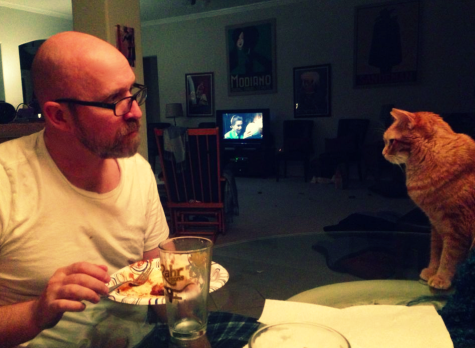
Because it MIGHT just pay off! ~Johnny Cat
All rule-breaking (in my POV) must be to better serve the consumer not the creator. Though I am not particularly fond of Hemingway’s writing, he was a journalist. Fiction, at the time, was BLOATED.
Yet, people in Hemingway’s time finally had photographs, film and newspapers. They KNEW what a whale looked like, so why insult them with a 100 pages describing one?
I imagine this overwriting drove a journalist nutso, and it took a journalist to whittle fiction down to the bones and bare form story.
See, when Melville write Moby Dick he was serving the audience/consumer of his time. He didn’t make the assumption his potential readers were all world-travelers and had seen what he’d seen. Thus, all those details were important for HIS readers.
But, as technology and the world changed, that massive amount of description and exposition were no longer necessary and actually got in the way of the story. It insulted the reader’s intelligence. I feel this was probably a driving force behind Hemingway field-stripping prose.
Did everyone LOVE Hemingway? No. There are people like me who like more description. BUT, there was obviously an audience who appreciated that an author finally wasn’t wasting their time using every fancy adjective, adverb and metaphor they could stuff into a paragraph.
Breaking Rules Begins with a NEED and a Vacuum
When I started writing about social media it was because no one was saying the things I needed to hear. I needed something simple, timeless and effective. WANA methods worked in 2008 and they still work today because they are simple and functional.
Instead of trying to alter the authors’ personality and make them rely on all their weaknesses, I created a method that harnessed the writers’ personality and allowed them to play to their strengths.
This is why artists can be particularly good at business once the fear-factor is peeled away. We have great powers of empathy. Remember, in the last post, I said our goal is to write the book people don’t yet know they want.
Angela Ackerman and Becca Puglisi wrote a FABULOUS series of craft books because there were none like the ones they as authors needed. They, themselves wanted simple and effective tools deepen characters, yet none were available…so these gals stepped in and WROTE them. I HIGHLY recommend just getting them all. The Emotion Thesaurus, The Positive trait Thesaurus and The Negative Trait Thesaurus.
If you are SERIOUS about writing a great book this year, just go use that gift card you got for Christmas and get these books, today.
Moving on…
Giving Consumers What They Don’t Know They Want
Henry Ford once said if he’d have asked customers what they wanted, they’d have requested a faster horse.
When social media became a game-changer, my potential customers wanted the Internet to implode. They wanted things to remain the same, even though the paradigm of the time was highly unfavorable to writers. As of 2006, writers had a 93% failure rate. Yet writers (like all humans) feared change.
Here’s the thing, anyone literate can write. This means anyone literate could write a book, right? But what is different about us as artists? The world relies on our eyes. We see what others can’t.

I saw THIS in the future…
I saw that brick-and-mortar was crumbling and that social media would eventually empower authors. Though many writers kicked and screamed and begged for the Web to eat itself in a digital black hole, I knew in my heart that was BAD (and wouldn’t happen anyway). Time would prove what I believed. I merely had to stick to my guns no matter how many hateful comments I got on my blogs.
In my heart, I knew I was serving my audience.
Business & Art
Hemingway reinvented writing because he didn’t like all the fluff. He wrote the book he wanted to read and took a risk others would read his books and like them, too. Instead of doing what everyone else was doing, he did something different.
When we break rules, instead of “being different” we should “differentiate.” We need to follow our passion and look for the vacuum yet to be filled.
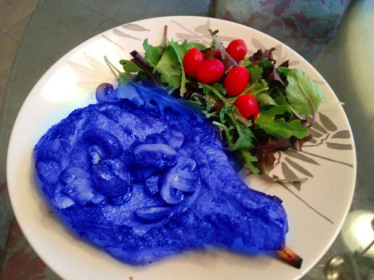
BLUE STEAK. But look how CLEVER it is! Really, it’s YUMMY.
I’ve done business consulting and one of the first things I advise is for the company to pull the annual reports of their top five competitors. Annual reports are dreadfully boring but highly valuable.
What are these companies bragging about to their share-holders? Well, their strengths, duh. Is that where a new business/entrepreneur will find their niche? NO. And, btw, it is the DUMBEST place to try and compete.
The trick is to look at the reports and see where their competitors are struggling. What they are promising to improve (or even fail to mention but should be there)? Find that gap and there is your business plan (book idea).
Breaking Rules in Creating

*giggles*
If we are simply writing retreads of everything already available, we aren’t differentiating.
Oh, but my vampires glitter, they don’t SPARKLE.
Nooooo, that is being different, not differentiation.
Anne Rice is almost solely responsible for CREATING the vampire craze because she dared to write a book from the vampire’s perspective and stuck to her guns even when criticized.
Charlaine Harris asked a “What if?” with her Southern Vampire Mysteries.
What if vampires have always been around but hidden because they had to feed on human blood? What if that blood could be synthesized and vampires could “come out of the coffin”? What would the world be like with predator and prey trying to coexist? Could they?
POOF! Formula for best-selling books and the highly popular HBO series True Blood.
T. Jefferson Parker broke the rules in his thrillers when he mixed first person and third person and he chose to write the ANTAGONIST’S perspective in first-person.
But, he didn’t do this to be clever.
When T. Jefferson Parker writes from the perspective of a car thief or a gun-runner in first-person, we (the reader) are more intimate with them. We understand their whys and become emotionally vested. This increases tension because we find ourselves often rooting for the bad guy even when we know we probably shouldn’t.
This literary device is unique. It stretches our empathy and our minds.
***Note, this is why understanding rules helps us effectively break rules.
J.K. Rowling wrote Harry Potter from inspiration, but she stuck to it despite rejection because, in spite of what she was being told, she believed a YA male protagonist would be popular. So did Jonathan Maberry in his Rot & Ruin series.
These authors not only soul-searched for the book they wanted to read but wasn’t there, but they looked to what books weren’t being written.
We can criticize 50 Shades of Grey all we want, but E.L. James wrote the books she wanted to read and the ones no one else was offering.
All these authors created the books readers didn’t yet know they wanted to read. They all broke rules, whether it was asking a new question, playing with POV, offering up a teenage boy protagonist when most readers are female, or even whips, chains and handcuffs.
This is to say, READ. Books are not so cost-prohibitive that we are really “competition” for each other. It’s why teamwork works so well in our world. People generally will buy/read more than one book.
When we read the genres we love (that we are writing in), look at the strengths, but take time to ponder what you might be able to do differently. What could you possibly combine that normally doesn’t go together? What audience has no voice?
Get in the head of your audience and look for what you have in common. What is the need your book can fill? Write what scares you, because it probably scares your readers too.
Maybe it is a sexy 53 year-old spy, a vestige of the Cold War relegated to being invisible because of age….but she is fit and sexy and KICKS @$$.
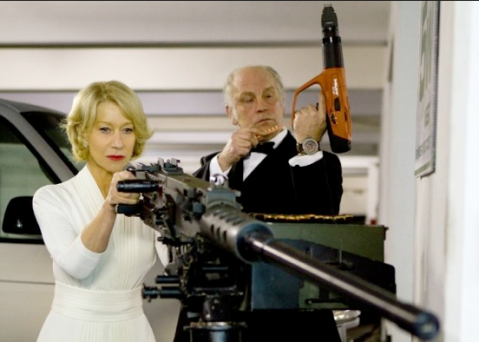
From the movie “Red”
Maybe the protagonist struggles with her weight or an eating disorder. Perhaps your male protagonist struggles with how to be strong in a world where strong males get a lot of pushback. Or maybe he has a learning disability but that turns out to be why he is the perfect hero.
Perhaps it is an underrepresented ethnic group or writing from the perspective of those most overlooked. Sure, we have dozens of Navy SEAL books because SEALS are “hot”, but what about the brand new Airman in Supply who uncovers a vast conspiracy but no one will listen?
Your audience wants to see a part of themselves in your work. How can you do this better?
Just getting the brain-gears moving :D .
We will continue to explore ways that art and business merge, how to be creative and how to better serve our customer (reader). Some ways to create an edge in this highly competitive world. Just remember that success is about simplicity and service. Stick to those? And that’s a great foundation.
I LOVE hearing from you!
To prove it and show my love, for the month of JANUARY, everyone who leaves a comment I will put your name in a hat. If you comment and link back to my blog on your blog, you get your name in the hat twice. What do you win? The unvarnished truth from yours truly. I will pick a winner once a month and it will be a critique of the first 20 pages of your novel, or your query letter, or your synopsis (5 pages or less).
Winner for DECEMBER is Chris Phillips. Please send your 20 pages (5000 words) in a WORD DOCUMENT to kris teen at wan a intl dot com. Or you can send a query letter or five page synopsis (1250 words) in a WORD document. Congratulations!
For those who need help building a platform and keeping it SIMPLE, pick up a copy of my latest social media/branding book Rise of the Machines—Human Authors in a Digital World on AMAZON, iBooks, or Nook.



